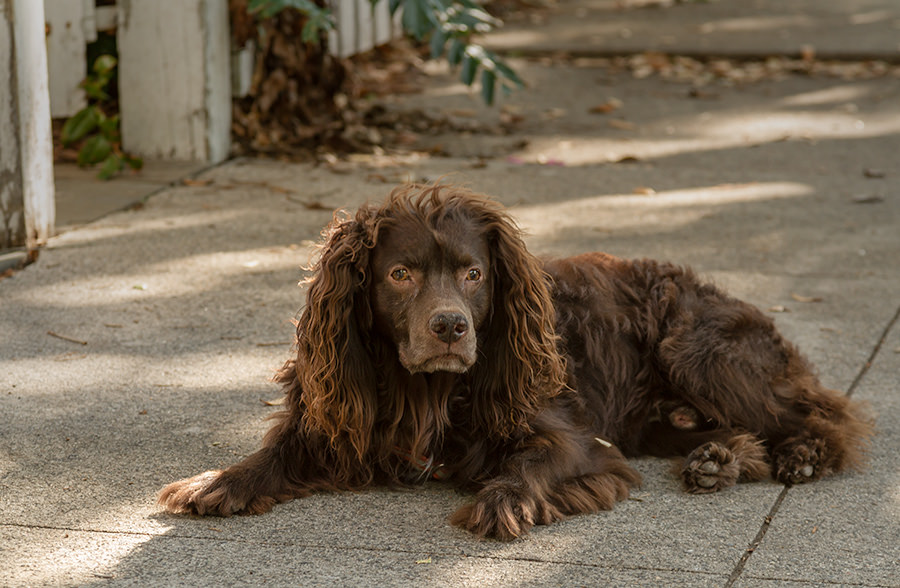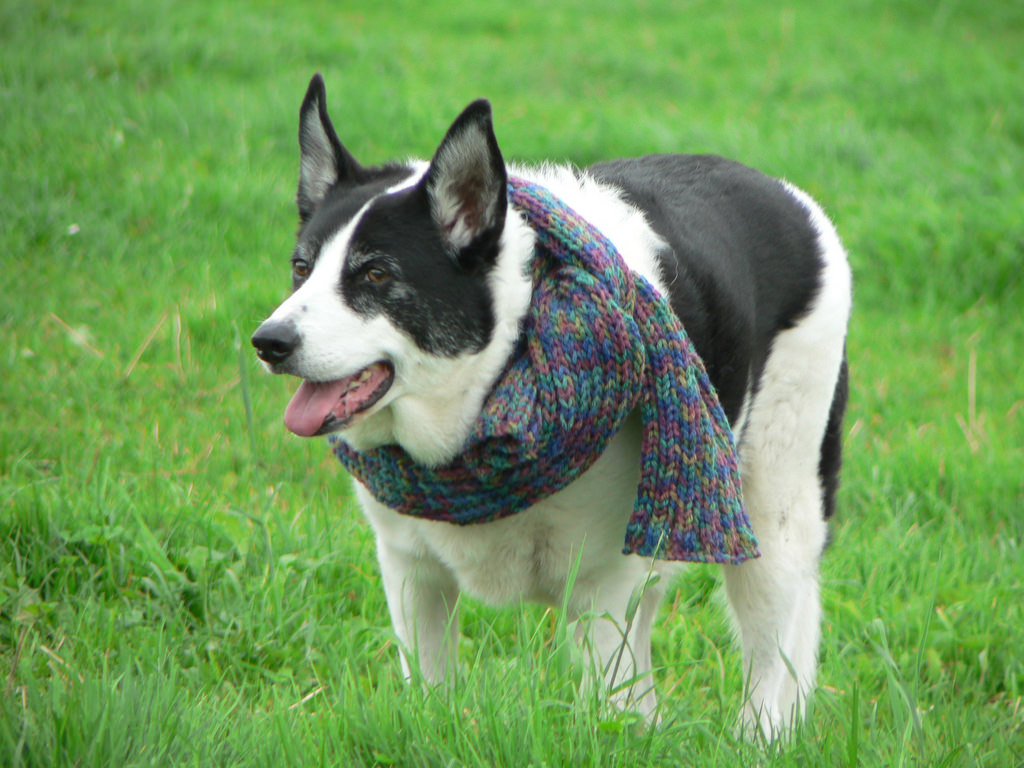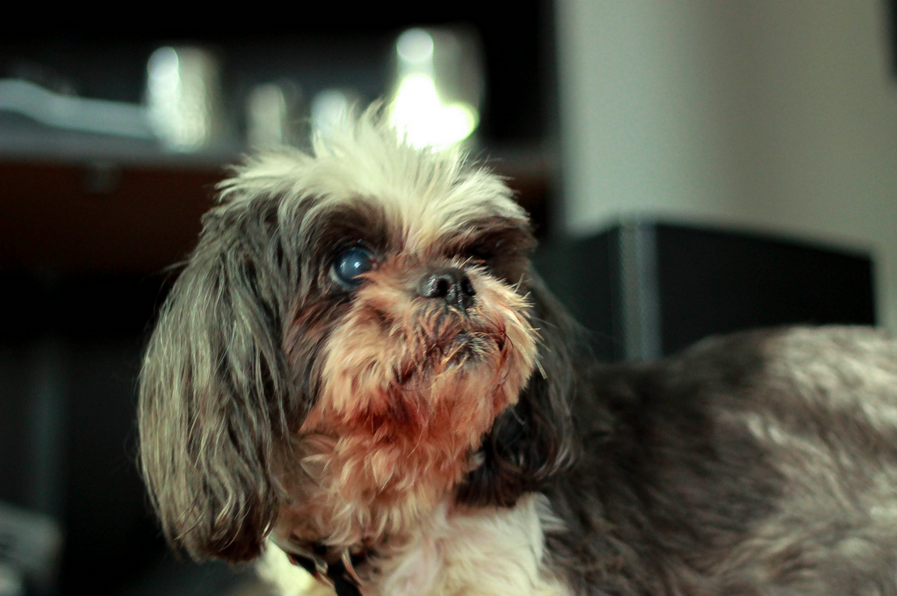What you need to prepare for with an aging dog

Are you noticing several new gray hairs around your pet’s face?
Maybe your dog just isn’t running as quickly or catching their ball as easily as they used to.
The signs of aging in your pet are obscure at first and you may not notice them beginning to “slow down” right away, but at some point your dog is going to get older.
Giving your senior canine the very best in their golden years doesn’t have to be difficult if you’re prepared and know what to expect. In the same way that people age, your dog will experience changes in diet, mobility and control over their bowel movements.
As pet owners, we all want the best for our dogs in every aspect of their lives. Take the necessary steps below to keep your best friend happy and healthy as they move into their later years.
What will happen as my dog ages?
Physically, you’re initially going to see their health degrade at a slow rate. They’ll still be happy and enjoy normal activity, but they just won’t be able to do activities like fetching for as long as they would have before. Once they move further into their later years, however, the health issues become more apparent and you’ll have to take action to keep your dog as happy and healthy as possible.
Dogs eat less as they age
As they get older, your dog’s metabolism will begin to decrease. Like humans, their teeth will eventually start to break and fall out, which can also make it extremely difficult and painful for them to chew. Their digestion will become less sufficient and the quality of the nutrients they consume will need to be increased.
When this happens, you’ll need to make changes in their diet; human-grade foods (like tuna) will be better in nutrition. Their meals should be high in proteins, fatty acids and probiotics. If possible, you should purchase a daily vitamin to supplement their regularly scheduled meals.
If your dog is at the age where most of their teeth are gone and they’re at risk for gum disease, your veterinarian can suggest and occasionally provide soft foods that will prevent further damage to their mouths and keep them free of harmful bacteria.
Skin problems are prominent among senior pets
Some dogs begin to lose fur as they age, and their skin becomes dry, itchy, red and irritated. This can create much bigger problems such as hair loss, hot spots and infections, especially if your pet is licking the area excessively.
This sometimes requires medication from your veterinarian, but can be handled with a few simple changes at home, as well. When bathing your dog, avoid using shampoos that contain alcohol, as it strips them of their natural oils and will further irritate the skin. Instead, use all-natural shampoos with chamomile, witch hazel and rosemary; they work well as gentle antiseptics. You’ll need to purchase a conditioner and a leave-in conditioner for serious cases, which will reduce inflammation.
If your pet has already lost a lot fur and it no longer grows back, moisturizer and sun block are necessary to protect their sensitive skin. If you must use human sunscreen, you’ll need to purchase the kind that is used for babies, as the zinc in adult brands can be poisonous if your dog decides to lick it off.
Weight gain and joint health are concerns
Although it is normal for dogs to gain weight as they age, it’s important not to allow them to become obese, as this will shorten their lifespan and place pressure on their joints.
In the same way that our bones and joints wear out over time, so do those of our dogs. Expect to see sore knees, shoulders and sometimes irritation in the neck; you’ll need to accommodate them as this progresses. Bending over to pick up toys, treats, and to drink water could also be painful without modification.
If you have a taller breed such as a Great Dane, purchase an elevated bowl so they won’t have to strain their neck when reaching for a bite of food. Try the Super Design Elevated Dog Bowl on Amazon, which has excellent reviews and comes in three colors.
Bathroom issues are likely with aging dogs
Once your dog has reached the point where getting up is painful, they won’t always have the energy or the strength to relieve themselves outside. Don’t get angry, punish or yell at them. Chances are your pooch is already sad, embarrassed and upset that they’ve soiled themselves and displeased you.
Most of the time your dog will try to get up and just won’t make it out the door. For times like these, it is necessary to give your pet a place in the home where they can quickly and safely empty their bladder. Although they’re mostly used for puppies, potty pads are the perfect tool to give your pet a comfortable place to urinate when they’re unable to use to the grass. Potty pads are designed as a square plastic sheet with an absorbent layer over the top. They’re also scented, both to cover up the smell of waste and to give your pet the green light to use the bathroom in that specific spot.
Your pet may not take to pads right away, so it will be important to encourage them to “go potty” on the pads and then reward them when they do.
Degenerative disease may affect your dog’s sight
As time goes on, your senior pup may start to lose their vision. Some will have to rely solely on their sense of smell to get familiar with their surroundings. You can take preventive measures to slow down degenerative disease, though. Take your pet to play in shaded areas that will defend their eyes from the sun and purchase a bonnet or sun visor on Amazon for added protection.
Keep in mind that vision loss should be a gradual, slow event. If your pet wakes up one day and suddenly cannot see, you need to get them to a veterinarian as soon as possible. According to PetMD, rapid vision loss can be a result of diabetes or kidney failure and should be treated immediately.

Be prepared for what may come as your dog ages and you’ll be able to keep them happy in their golden years. Image: eddiemcfish
What should I know about exercise with my older dog?
Treating your dog the same way you did when they were a puppy could have serious consequences. Sometimes your dog won’t know how to pace themselves, so you have to decide when it’s time to take a break.
How much exercise should I give my dog?
You can still give your dog exercise, but you’ll need to gravitate toward low-impact options that won’t be abrasive on their bones, joints and muscles. Swimming and hydrotherapy are both highly recommended by veterinarians to keep your dog happy and help to slow down the degenerative process of their bodies.
Swimming works very well for dogs who are still active but can’t run and jump as they used to. However, you should never risk the chance of your beloved pet drowning; provide a wade pool or take them to the beach so they can walk in the shallow parts of the shore. The soft resistance of the water coupled with your dog pushing through it will help keep them strong.
Try using a harness for assistance
If you’re unable to give your dog some type of water rehabilitation or rigorous exercise, it’s still fine to take them on walks as long as they’re not in pain or discomfort.
To help them get around throughout the day, consider purchasing a harness to redistribute their weight. It will fit them the same way a girdle would for added support, with a handle connecting to the leash so that you can pull your dog up and lift them by the hips. This is especially useful for the morning bathroom routine when your pet is stiff, sore, and needs time to warm up their muscles a bit before they start carrying their own weight.
What can I do to help my dog be comfortable?
There are many things you can change in their daily life to make things easier for your pet. They’ll need assistance doing regular daily activities, and they won’t be able to sleep on the ground anymore, so you’ll definitely need to get them a bed.
Dog steps can made a world of difference
Going up the stairs, getting in and out of vehicles and hopping into the bathtub won’t be as easy as it used to be for your aging dog. Certain breeds are more likely to get hip dysplasia, but senior dogs commonly end up with this problem.
Even if you have a resilient canine who still loves to run, you’ll find yourself picking them up to get into the car and again to exit when you’ve reached the park. Make life easier for both of you and get a ladder or step stool; this way your dog can help themselves and you won’t have to worry about a potential back injury. Your dog needs you at your best!
Here are our recommendations for quality step-ladders for vehicles.
You might want a special bed
Consider buying an orthopedic bed so your dog can sleep peacefully and wake up without stiff, sore hips. The best beds will be flat and elevated off the floor, as your dog needs to be able to get up and down without a struggle. Look for an option with multiple layers, as well; single layered beds will be fine for a bit, but they’ll wear out quickly and become uncomfortable after several weeks of use.
Another thing to keep in mind is that your dog may have trouble getting up to go to the bathroom eventually and there is always a possibility that they’ll urinate on their mattress by accident. Buy material that is water proof, water resistant or easy to wash. If not, you may end up with several ruined beds and a hole in your wallet. If the current bed doesn’t have any water resistance, look for a protective casing to keep it clean.
You can find some excellent bed options here.
Therapeutic massages can comfort your dog
If your senior canine is crying out in pain when they attempt to stand up, stretch, walk or bend over to eat food, you’ll be tempted to give them a pill immediately; no one wants to see their pet in pain.
Dogs with genetic predispositions to joint and muscle problems coupled with the process of aging will have a much harder time getting around than animals who naturally have better health. Long-term use of oral medications for pain management will damage the lining of their stomach and create a negative impact on their liver and kidneys.
Consider hiring a dog-massage therapist to give your pet a tender touch. Widely renowned among dog owners, massage has been credited for getting animals back on their feet and moving along comfortably without medication.

There are many ways to keep your dog comfortable as they age. Image: kaliiforrest
Keep an eye out for signs it’s time to cross the Rainbow Bridge
As much as we’d like them to, our pets aren’t going to live forever. Our responsibility as pet owners is to give our senior pups the best experience possible in their last years and to recognize when it is time to let go.
Pay attention to noticeable signs that your canine is ready to pass: They will refuse to stand or won’t be able to stand up at all without assistance; even with your help, it will be excruciating to try and walk and move around the home; they’ll sometimes refuse to eat or drink; and won’t meet their daily activities, toys, and treats with the same gusto and joy that they used to.
Your dog may show complete disinterest and might even appear to be sad that they can’t enjoy life like they have in the past. Follow the HHHHHMM scale and mark your calendar every day from 1 to 10 on each item: Hurt, Hunger, Hydration, Hygiene, Happiness, Mobility and More Good Days Than Bad.
If your pet scores low for most of the month on each of these items, this could mean it’s time to let go.
At the end of the day, it is important to think about and prepare for the aging and of your dog. Take the necessary steps above to create an environment where they’re still able to thrive by eating without pain, enjoying time outside and living without pain or injury. Like humans, animals in better health will live much longer.
Although it is both painful and difficult for us, remember that your dog has given you many years filled with happiness and companionship. They deserve a peaceful, pleasant, last moment with the person they love most.
-Chloe Weaver
Feature image: Ken Dodds
